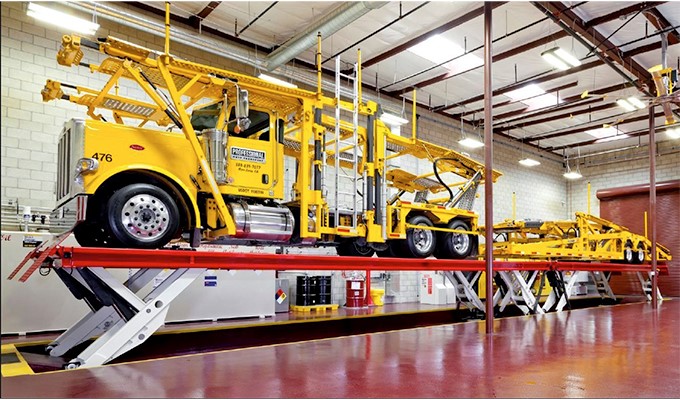Supply chain disruptions are approaching their worst levels in nearly 50 years. They are combined with escalating business and consumer demand for product deliveries and passenger transport. To combat industry issues, Stertil-Koni, recommends a six-step approach to help large truck and bus operators maximize vehicle up time.
“The proper selection and ongoing maintenance of vehicle lifts—which help service these vehicles—is particularly critical in this business climate,” notes Dr. Jean DellAmore, Stertil-Koni president. After all, for vehicle maintenance shops across North America that already operate on tight schedules, the requirement to keep preventative maintenance and repairs on-time is essential.”
It is also why Stertil-Koni is recommending a six-step approach to ensure optimal technician safety combined with top vehicle performance.
6 STEPS TO SAFER LIFT OPERATIONS
Stertil-Koni’s six steps:
- Certification is Key. Consider purchasing lifts certified by the Automotive Lift Institute (ALI). The ALI Lift Certification Program independently tests and validate that equipment meets all ANSI/ALI ALCTV safety and performance requirements.
- Select the Proper Lift. Know the weight of the heaviest vehicle you intend to lift. Ensure the lift selected meets or exceeds that capacity. Next, measure the clearance of the facility to ensure ample room to raise a vehicle for servicing. Also note the height of the tallest vehicle you intend to lift. Ensure there is room to raise the vehicle for a technician to work underneath.
- Safety First. During lift setup, check the perimeter of the lift for obstructions or hazards. Lift the vehicle no more than 12 inches, pause, and check the area again. Then, lift the vehicle so that the technician can work underneath. Stertil-Koni also advises to select lifts with a standard independent mechanical locking system. This feature lowers the lift into its locks as technicians perform their work.
- Maintain a Maintenance Schedule. Ensure all lifts receive regular scheduled maintenance and an annual lift inspection by an ALI Certified Lift Inspector.
- Technology Matters. Look for lifts with technologies that enhance safety and performance. For example, Stertil-Koni lifts feature a full-color touch-screen control console where technicians can view lifting information. Stertil-Koni also introduced a Continuous Recess system for its ECOLIFT and DIAMONDLIFT. This technology allows the lifting bolster to recess flush to the floor while moving horizontally under low-profile vehicles. It also facilitates lift setup, minimizes the possibility of vehicles hitting the lift upon approach, and reduces tripping hazards.
- Create a Safety Culture. Promoting a safety culture is essential. Service bulletins, safety messages, and continuously updating technicians’ skills are vital to a smooth-running maintenance facility.
PLAN FOR UPTIME
“While we are not going to solve the supply chain challenge overnight, vehicle maintenance facilities can help ensure that their fleets are always properly serviced and ready-to-go with support from a carefully planned, heavy-duty vehicle lifting approach,” DellAmore says. “That in turn will definitely help maximize your uptime.”
Find out more, visit www.stertil-koni.com.




